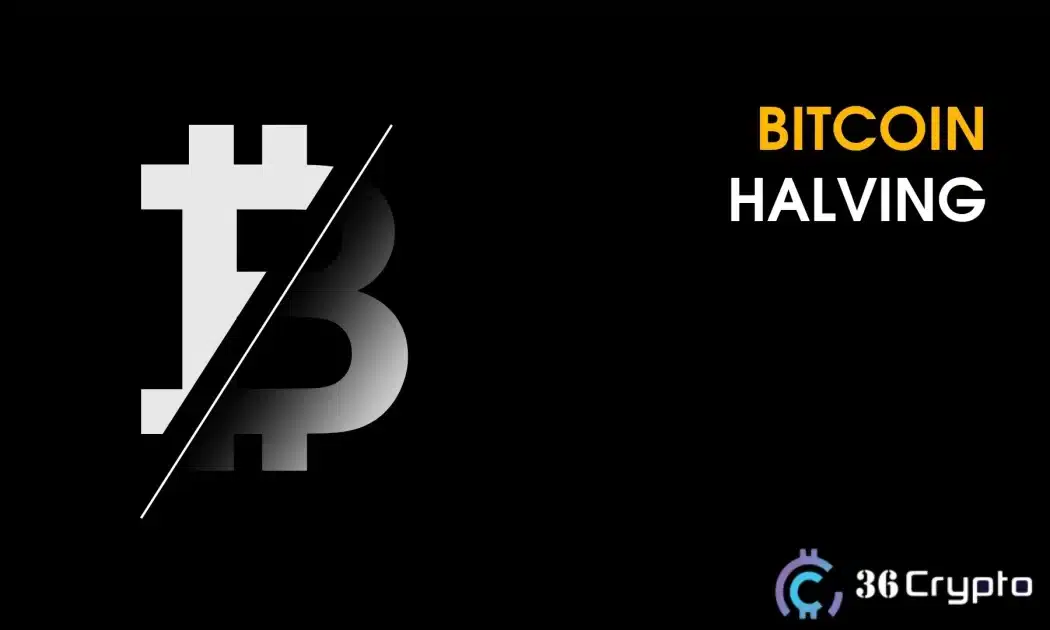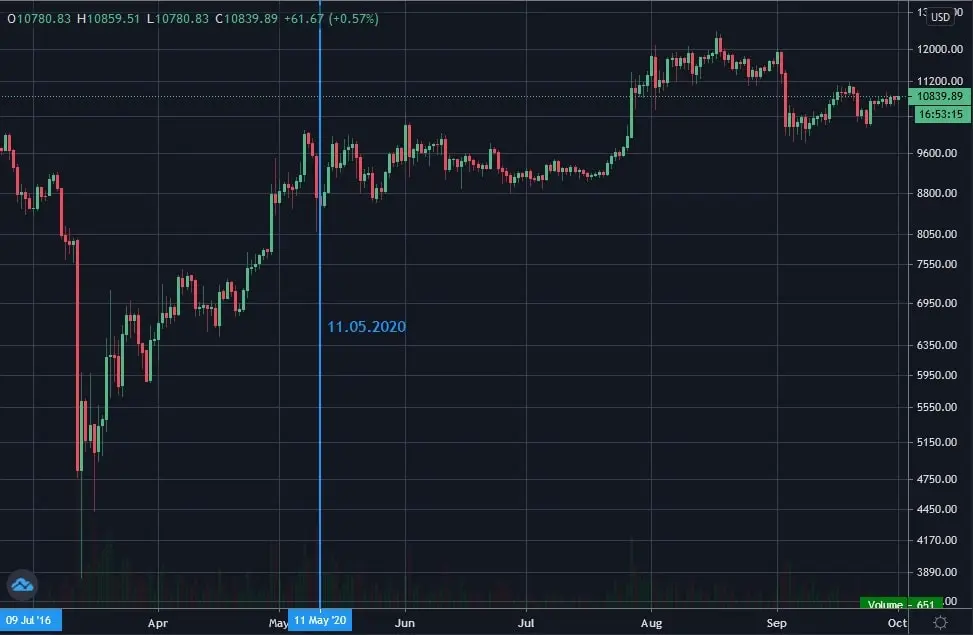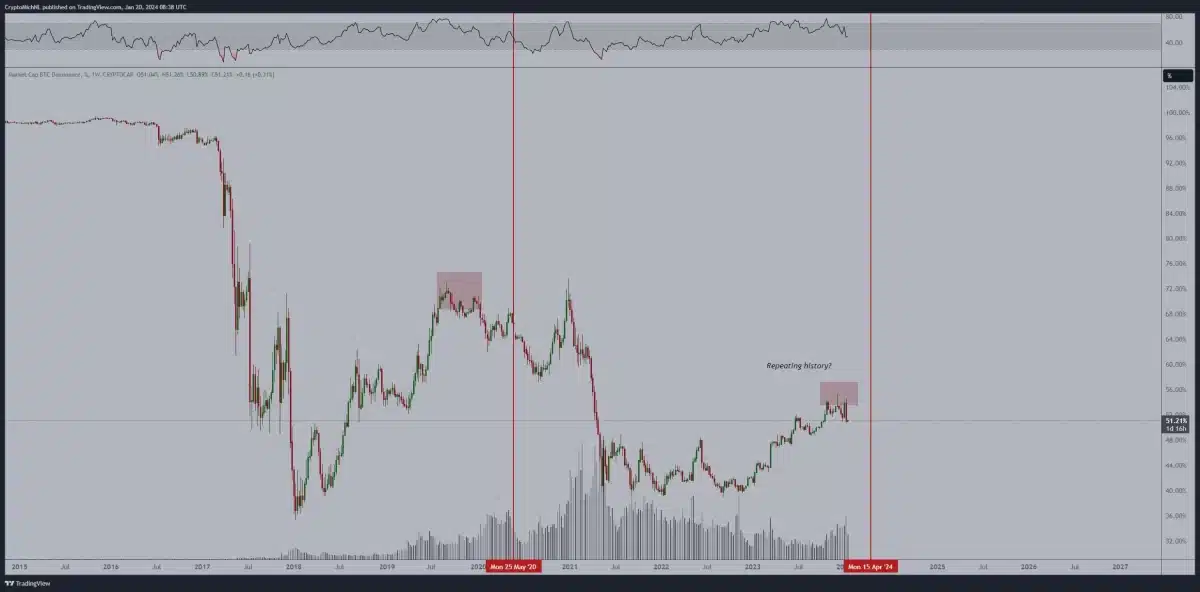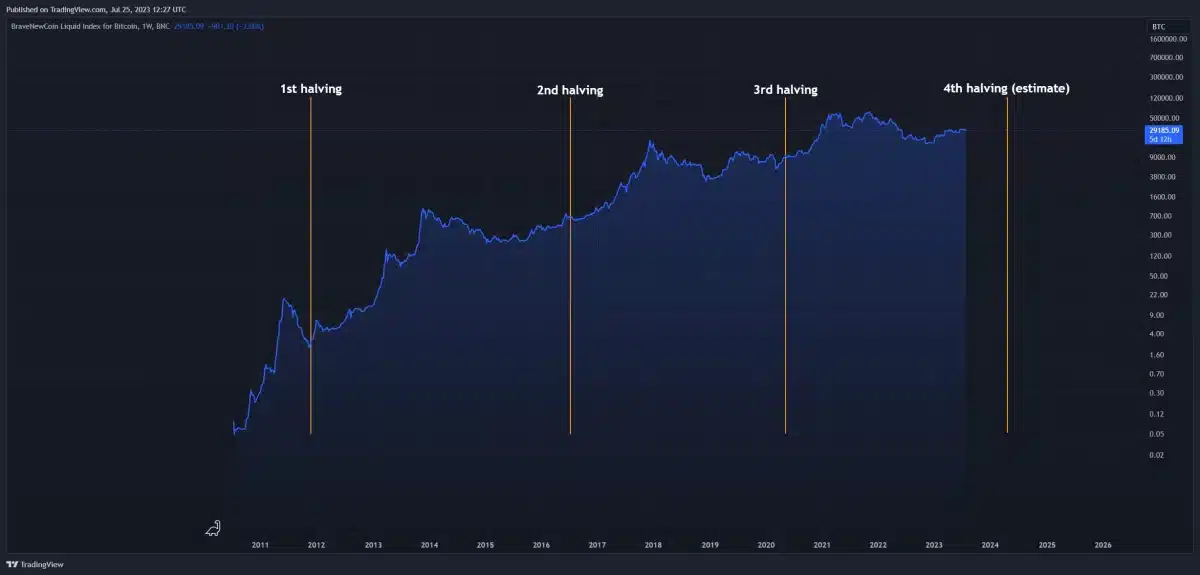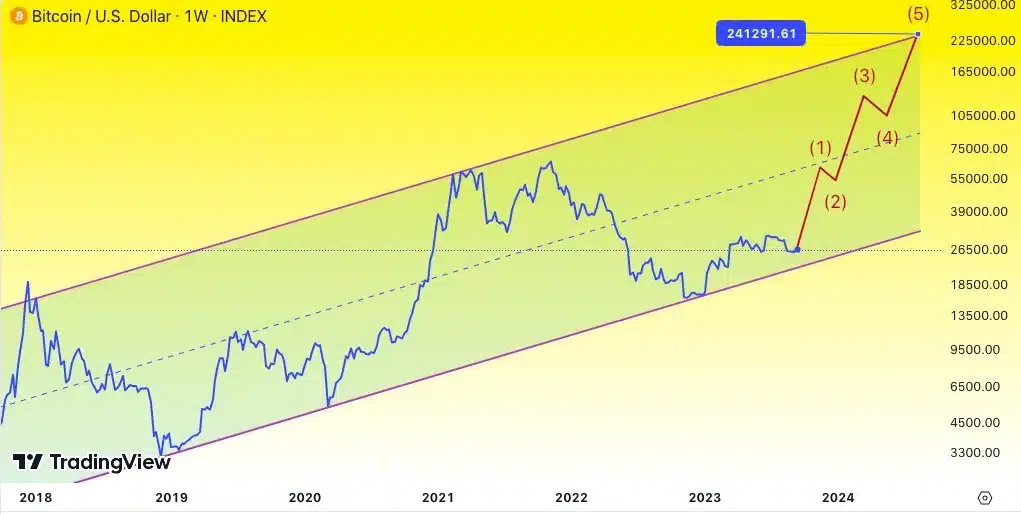As halving is less than a month away, it is time to assess its factual impact on Bitcoin. The recent Bitcoin update of its all-time high stressed out the impending halving – a potential kick-starter for BTC value. Many expect high returns from it, while others are reminded of the subpar Bitcoin performance that ran counter to the ETF-grounded anticipations.
Will halving do the trick for Bitcoin, and are we seeing its new all-time high this year? Instead of asking, we’re answering – and illustrating Bitcoin’s moves after the halving.
Context
After the endurable “crypto winter”, which stood for the underperformance of the crypto market, the year 2024 should have become a silver lining for investors. Two factors, hinting at the year’s vital role in breaking out the so-called “bull-run”, are the introduction of Bitcoin exchange-traded funds (ETFs), and halving.
Both events have been considered as the drivers for broadening crypto adoption and supply influx that would inevitably revive the correction-full market and put it on bullish rails.
Spot Bitcoin ETFs were approved on January 10, clashing with thrilling expectations on BTC market development. While reaching its yearly milestone of $49,102 amidst the hype, the asset eventually drowned in corrections and volatility.
The situation radically changed within macroeconomic liquidity cycles, as Bitcoin ETF vast inflows pushed BTC to its new historical high of $73,573.91 and the market cap of over $1.45 trillion, according to the data by CoinMarketCap.
Investors’ disparate opinions about halving significance do not abdicate the importance of knowing about halving. Since this, we’ve been shedding light on the phenomena and its actual potential.
What Is Halving, and Why It Matters
To understand Bitcoin halving, you must first know how the Bitcoin network operates. Bitcoin’s underlying technology, blockchain, consists of a network of computers (called nodes) that run Bitcoin’s software and contain a partial or complete history of transactions occurring on its network. Each full node – a node containing the entire history of transactions on Bitcoin – is responsible for approving or rejecting a transaction in Bitcoin’s network.
In return, the network rewards nodes with a certain amount of Bitcoin. This very process stands for “mining”, as transaction validation requires vast computing capacities and energy consumption.
However, the reward for mining is not constant. After the Bitcoin network mines 210,000 blocks – roughly every four years – the amount of BTC given to miners is cut in half. That’s where the term “halving” derives – an event, that cuts the rate at which new Bitcoins are released into circulation in half.
As of January 2024, there have been three halvings: in November 2012, in July 2016, and in May 2020. Each of the events turned out to be significant – not only because Bitcoin is approaching its finite supply. Every halving signaled Bitcoin’s skyrocket in price.
The first Bitcoin halving, which took place in 2012, signified a pivotal moment in the crypto world, introducing the phenomena and spurring questions of what halving means, how long halving lasts, and why halving increases price.
Yet the noticeable effect on Bitcoin’s price was not on the face immediately. It kicked in three months later when the coin’s value began to grow steadily. The first milestone was reached through corrections in the autumn of 2013, totaling BTC prices above $1,100. Notably, at the start of halving, Bitcoin had been trading for around $12.
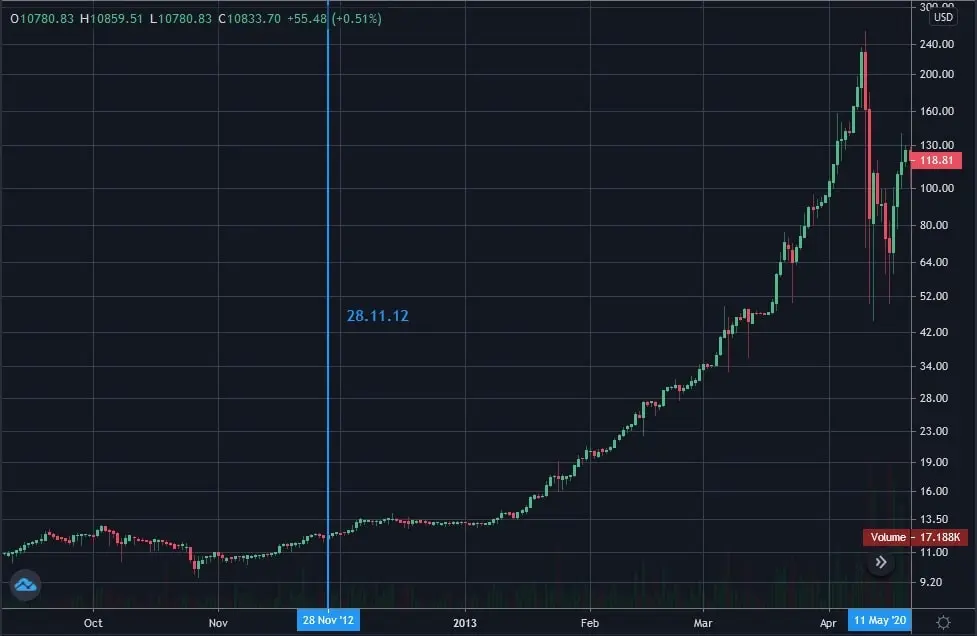
Bitcoin’s first halving timeline: 2012-2013. Source: StormGain
In October 2015, nine months before the second halving, steady growth began again. After the July 2016 event, the sharp rise of Bitcoin eventually took it to its all-time high of $19,700 in 2017. After that, a long bearish trend set in.
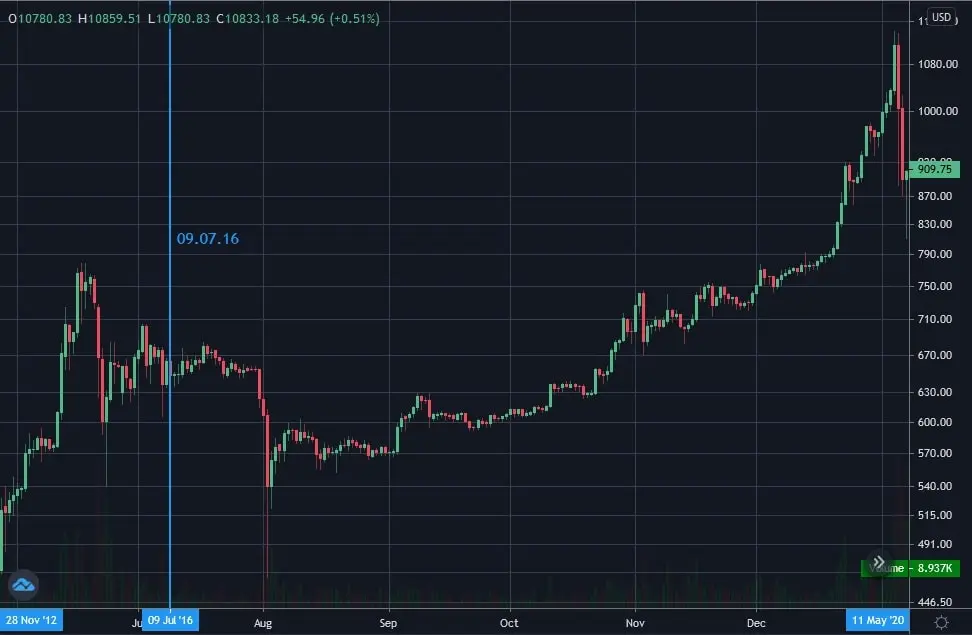
Bitcoin second halving timeline: 2016-2017. Source: StormGain
The 2020 halving did not lose its performance even due Covid-19 collapse. Starting at $8740, Bitcoin later hit its unbreakable milestone of over $69,000.
Seeing halving’s effect on the crypto market, the fourth event, expected to take place in April 2024, is anticipated with an exhilaration as well. The thrill is rallying through investors and the community, and crypto companies are on the verge of capacities. Thus, CoinMarketCap has set the countdown to halving, just as WhiteBIT and several other exchanges did.
But is 4th halving slinging the raft just like the three past ones did?
“History repeating itself”
While the opinions are diversified, the dominant stance converges into one key point: the 4th halving cycle replicates the preceding ones.
Tone Vays, an analyst and esteemed trader, notes this resemblance, citing Bitcoin’s decent performance in the years 2024 and 2025. Crucially, he regards halving not only as a technical alteration but also as a trigger for wider crypto adoption. In the latest interview for Metatalks, the investor states:
“We’re about five months away from the halving, and things are in consolidation mode. But here’s the deal: as the halving kicks in and the supply of Bitcoin decreases, coupled with more need for Bitcoin starts to enter the market from people being more comfortable with it, recognizing the bull market, and even corporations and other countries (besides El Salvador) jumping on board, along with ongoing geopolitical tensions worldwide, the demand for Bitcoin in 2024 is bound to skyrocket.”
The same outlook is shared by Michaёl van de Poppe. Eying Bitcoin’s previous halving cycles, he believes that “history is repeating itself”.
“It (halving-driven rally – author’s note) has happened in 2016, 2020 and seems likely to happen in 2024 as well. Once Bitcoin bottoms out, I expect altcoins to start outperforming.”
– states van de Poppe on his X page.
The past-grounded notion of Bitcoin halving appears to be dominant within the community, not to mention its optimism in conclusion.
Jon Nielsen, an expert for CoinCodex, sees Bitcoin price peak above $170,000 in August 2025 before a retracement to levels near $95,000, hinting at an evitable post-halving price spike.
Crypto-enthusiast and trader BitQuant seemed to be even more optimistic, believing that a new all-time high for Bitcoin would be reached during the pre-halving rally while post-halving one will conclude Bitcoin’s price for over $250,000. In his post for X, he claims:
“No, Bitcoin is not going to top before the halving. Yes, it’s going to reach a new all-time high before the halving. No, BTC is not going to $160K because the magnitude of every pullback is large. This means it will peak after the halving, in 2024. And yes, the target price is around $250K.”
The prediction was made way before the latest Bitcoin rally, marking the potential accuracy of BitQuant’s outlooks.
Still, the stances are not solid – especially the ones regarding halvings’ significance. Namely, a seasoned trader Peter Brandt believes that halving is not that impactful.
“The Bitcoin halving hype is a whole lot of excitement over nothing” – an investor stated in his post for X.
Peter Brandt also implied that halving hype might temporarily boost Bitcoin prices that will be blocked by the low supply rates.
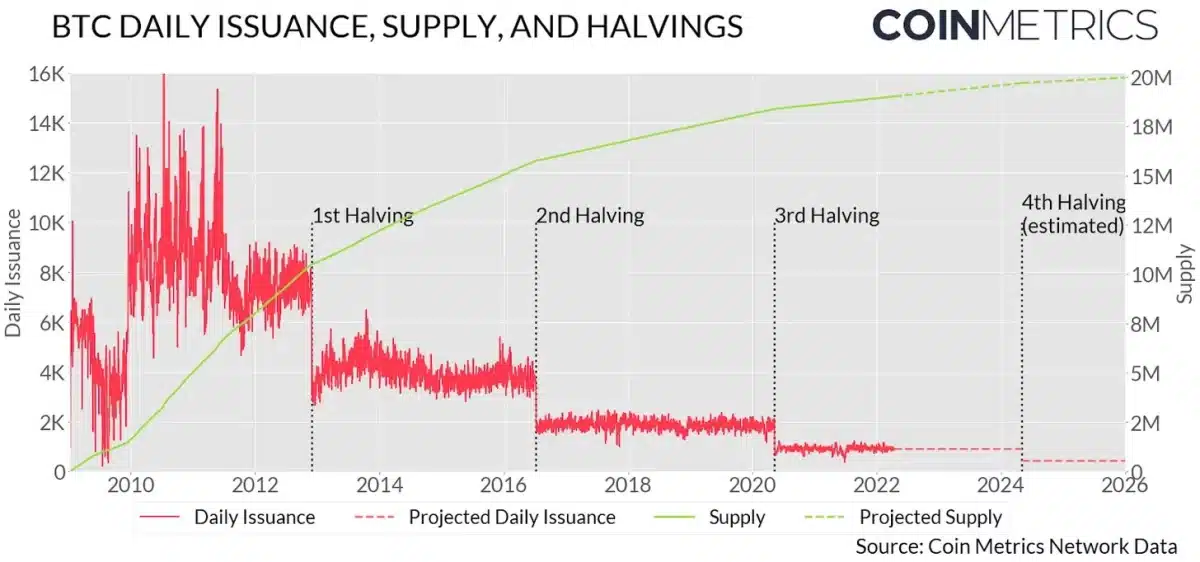
Bitcoin daily issuance, supply, and halvings. Source: Coin Metrics Network Data
The same skepticism to halving is voiced by Colin Talks Crypto as well. An expert believes that halving events are more likely to create psychological impact rather than actual economic effect, “as most tokens are in existence already”.
At the same time, many don’t see halving as a driver, but as a legitimate factor in the price increase. Mikołaj Zakrzowski, a former CryptoQuant on-chain analyst, exclusively commented on the article:
“…halvings only coincide with increases in Bitcoin price, and they do not create price surges. (…) Bitcoin is mainly driven by global liquidity cycles”
As of the time of the report, Bitcoin (BTC) is trading for $42,900.
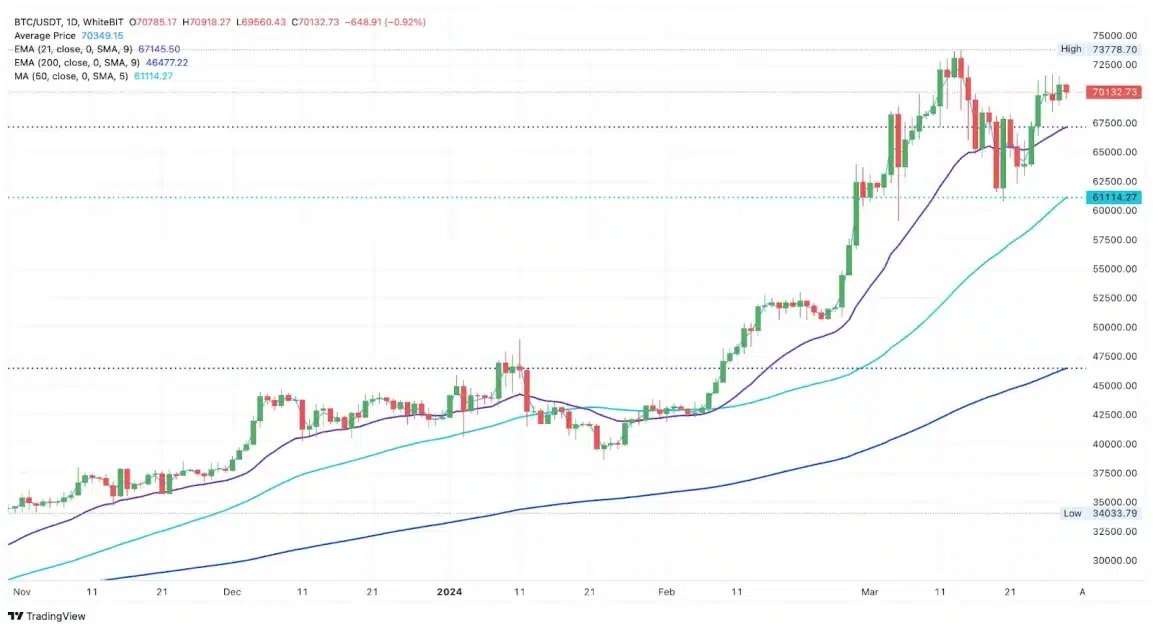
BTC/USDT 1D chart. Source: WhiteBIT TradingView
Closing Remarks
While the opinions on Bitcoin halving are diverse, the optimism and significance of the event tend to transcend a majority of them. Since the outcomes for the market are vague, halving events remain the core of tokenomics, the impact of which will be visible – whether it will turn out to be fundamental or latent.
Free Tool: Use our simple crypto profit calculator to calculate your potential profits and returns on your cryptocurrency investments.<<<

